Differential Roles of Insulin and IGF-1 Receptors in Adipose Tissue Development and Function
- PMID: 27207537
- PMCID: PMC4955980
- DOI: 10.2337/db16-0212
Differential Roles of Insulin and IGF-1 Receptors in Adipose Tissue Development and Function
Abstract
To determine the roles of insulin and insulin-like growth factor 1 (IGF-1) action in adipose tissue, we created mice lacking the insulin receptor (IR), IGF-1 receptor (IGF1R), or both using Cre-recombinase driven by the adiponectin promoter. Mice lacking IGF1R only (F-IGFRKO) had a ∼25% reduction in white adipose tissue (WAT) and brown adipose tissue (BAT), whereas mice lacking both IR and IGF1R (F-IR/IGFRKO) showed an almost complete absence of WAT and BAT. Interestingly, mice lacking only the IR (F-IRKO) had a 95% reduction in WAT, but a paradoxical 50% increase in BAT with accumulation of large unilocular lipid droplets. Both F-IRKO and F-IR/IGFRKO mice were unable to maintain body temperature in the cold and developed severe diabetes, ectopic lipid accumulation in liver and muscle, and pancreatic islet hyperplasia. Leptin treatment normalized blood glucose levels in both groups. Glucose levels also improved spontaneously by 1 year of age, despite sustained lipodystrophy and insulin resistance. Thus, loss of IR is sufficient to disrupt white fat formation, but not brown fat formation and/or maintenance, although it is required for normal BAT function and temperature homeostasis. IGF1R has only a modest contribution to both WAT and BAT formation and function.
© 2016 by the American Diabetes Association. Readers may use this article as long as the work is properly cited, the use is educational and not for profit, and the work is not altered.
Figures
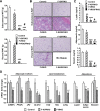

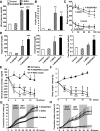
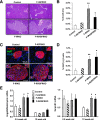
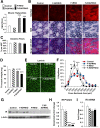
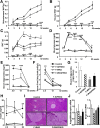
References
-
- Blüher S, Kratzsch J, Kiess W. Insulin-like growth factor I, growth hormone and insulin in white adipose tissue. Best Pract Res Clin Endocrinol Metab 2005;19:577–587 - PubMed
-
- Poulos SP, Hausman DB, Hausman GJ. The development and endocrine functions of adipose tissue. Mol Cell Endocrinol 2010;323:20–34 - PubMed
-
- Entingh-Pearsall A, Kahn CR. Differential roles of the insulin and insulin-like growth factor-I (IGF-I) receptors in response to insulin and IGF-I. J Biol Chem 2004;279:38016–38024 - PubMed
Publication types
MeSH terms
Substances
Grants and funding
LinkOut - more resources
Full Text Sources
Other Literature Sources
Molecular Biology Databases
Miscellaneous

